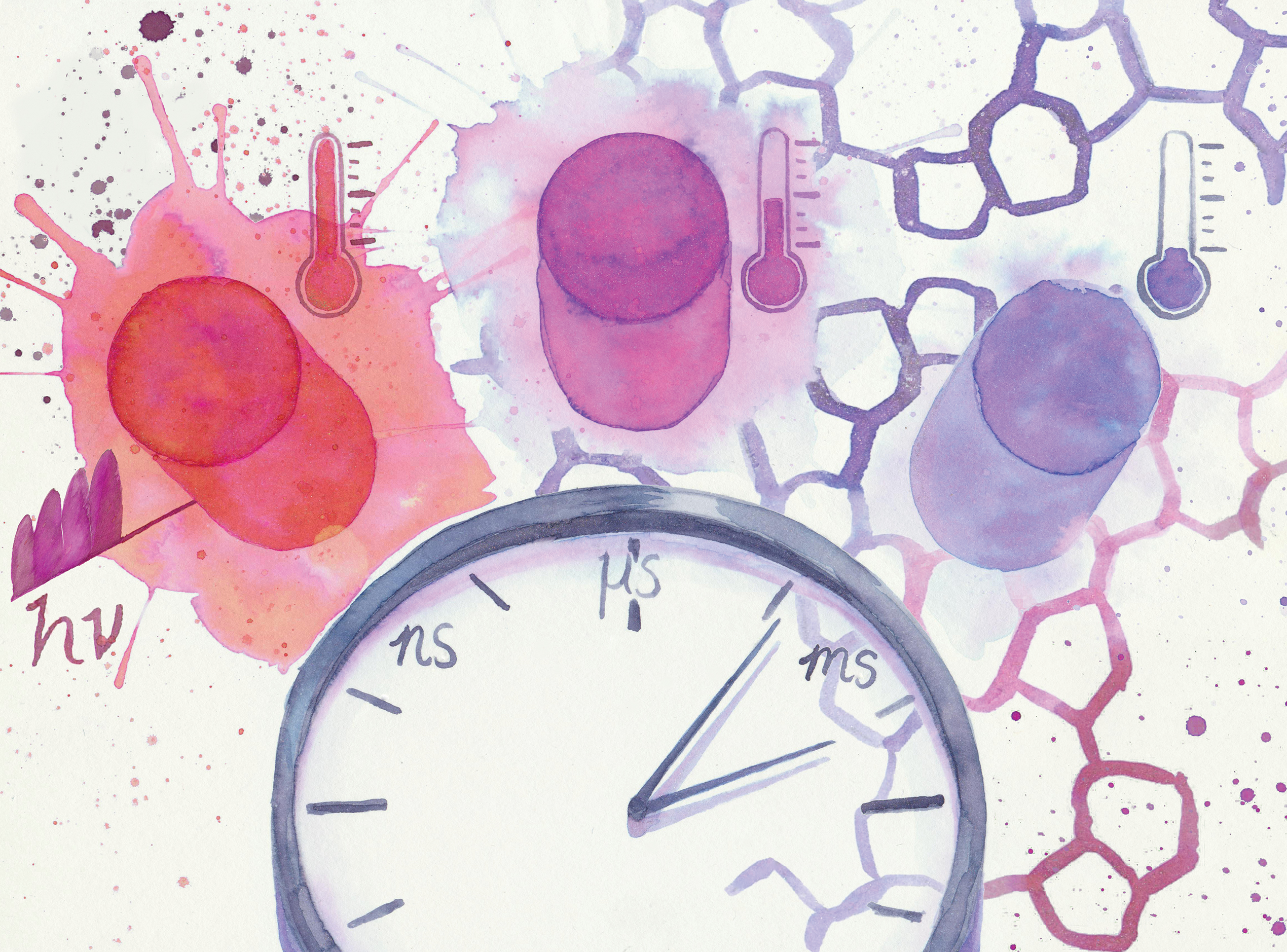A catalyst’s ability to speed up a chemical process without being used up makes it an integral tool in many of the chemical techniques relied upon in science and industry. From materials to medicine, to the environment and energy, catalysts are frequently the key ingredients for successful and efficient chemistry. However, when the chemical processes happen inside catalysts in a fraction of a second it can make studying them a challenging task. A team at the CLF-ULTRA facility have been investigating how to probe rapid chemistry in catalysts using laser spectroscopy techniques – and in particular, investigating what happens inside catalysts when they are rapidly heated and subsequently cooled.
The CLF study focused on solid–acid zeolites, which are a class of aluminosilicate minerals. Their acidity and their nanoscale pores and channels make them highly effective catalysts that are used in a variety of sectors, including emissions control and the chemical feedstock industry. To truly understand how they function, scientists must explore the chemistry of these zeolite pore networks and molecules moving through them down to the microscopic scale. The CLF group’s strategy was to investigate how zeolites behave under using pulsed nanosecond infrared laser heating. Such laser irradiation creates what is known as a ‘T-Jump’, where the temperature rapidly rises.
A key outcome of the study was that catalyst temperature changes of up to 140 °C were achievable by a single laser heating pulse in a nanosecond. Such large temperature changes are desirable for initiating many kinds of catalytic reactions. In liquids, this would raise concerns of cavitation and shock waves that would affect the structure of the sample, however the solid-form zeolites were observed to be notably robust. The team also found that bursts of multiple laser pulses could be used to generate arbitrarily high T-Jumps, while still maintaining nanosecond time-resolution.
In the CLF studies, water was used as a ‘guest’ molecule in the zeolite. In all cases, heating of over 50 °C was observed from single laser heating pulses. Obtaining the largest T-Jumps required the hydration levels to be ‘just right’. Too high, and the energy of the laser pulse went into breaking apart the liquid-like water clusters instead of heating the sample. Too low, and the sample absorbed less optical energy from the T-Jump laser.

Artwork by Helen Towrie.
A second laser technique was used to study the effect of the T-Jump on the zeolite and the manner in which it cooled. Time-resolved infrared absorption spectroscopy (TR-IR) allowed the team to probe at the molecular level chemical reactions and molecule diffusion processes as well as the spatial distribution of heat. This method is a particular speciality of the CLF-ULTRA facility and uses a laser-based IR light source to capture molecular scale information in a single measurement on incredibly short timescales (as fast as femtoseconds) for maximum detail. In the T-Jump experiments, a particular absorption wavelength that correlates to a particular chemical bond within the zeolite acted as a ‘thermometer’, clearly showing the changes in temperature compared to the structure’s starting temperature. The CLF group compared these measurements with realistic 3D thermal physics models that they developed for future applications to catalysts without an identifiable ‘thermometer’.
The results of the CLF-ULTRA T-Jump investigations show that high temperatures can be induced within zeolite catalysts and studied in detail on the chemical level using TR-IR. This is the first time a study of this kind has been conducted. T-Jump IR spectroscopy has been used to obtain <10 °C pulsed heating in liquids, but not 140 °C heating in solid catalysts, and while zeolites have been heated before with many different kinds of sources, synchronised IR spectroscopy from nanoseconds to seconds has not been used to study the heating effects. This method of laser pulsed heating with TR-IR absorption spectroscopy lays the foundations for further study of a huge variety of chemical processes enabled by zeolites and other solid catalysts. Developing the technique at the CLF means that it is now available to scientists and industry as a facility.
CLF’s Professor Paul Donaldson explains, “these results came out of two very focused four-week visits to the CLF-ULTRA facility in 2020 and 2022, but actually they have been six years in-the-making. The idea of laser heating catalysts and studying them with spectroscopy was key to a successful UKRI Future-Leaders grant science case I made in 2018. These kinds of proposals often don’t work in practice, or they take unexpected excursions from the original idea. Here, it turns out that we can actually do what was originally imagined, with a few tricks we had to come up with along the way. It is great to see the results of all that imagining, thinking and hard work of the team in the form of a detailed Chemical Science paper. I hope we’ve helped CLF-ULTRA to have an exciting new technique for the user community!”
Read the full publication here: Laser induced temperature-jump time resolved IR spectroscopy of zeolites (rsc.org)
